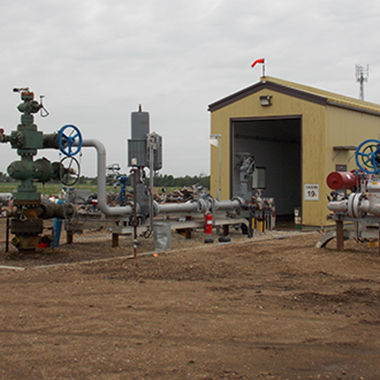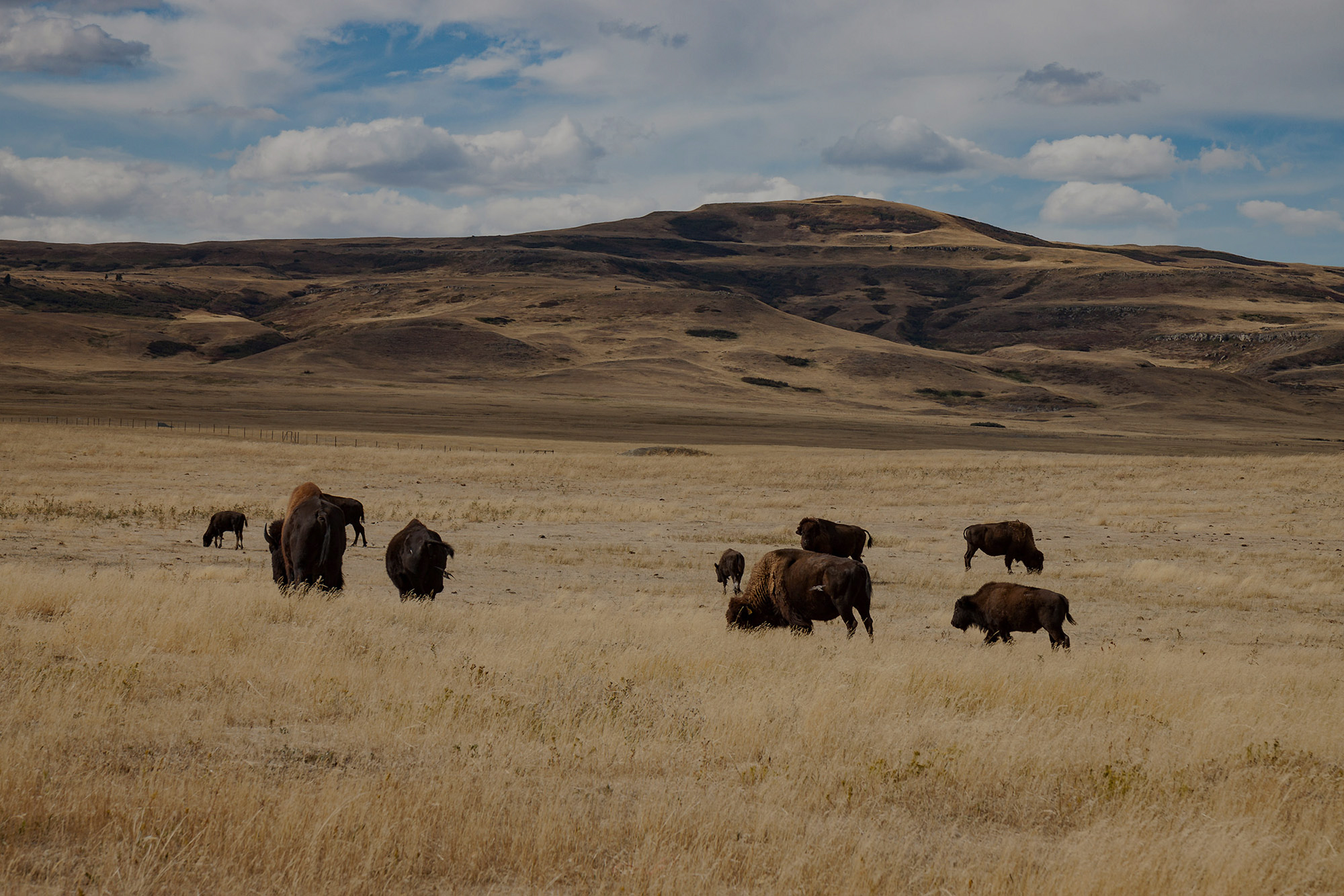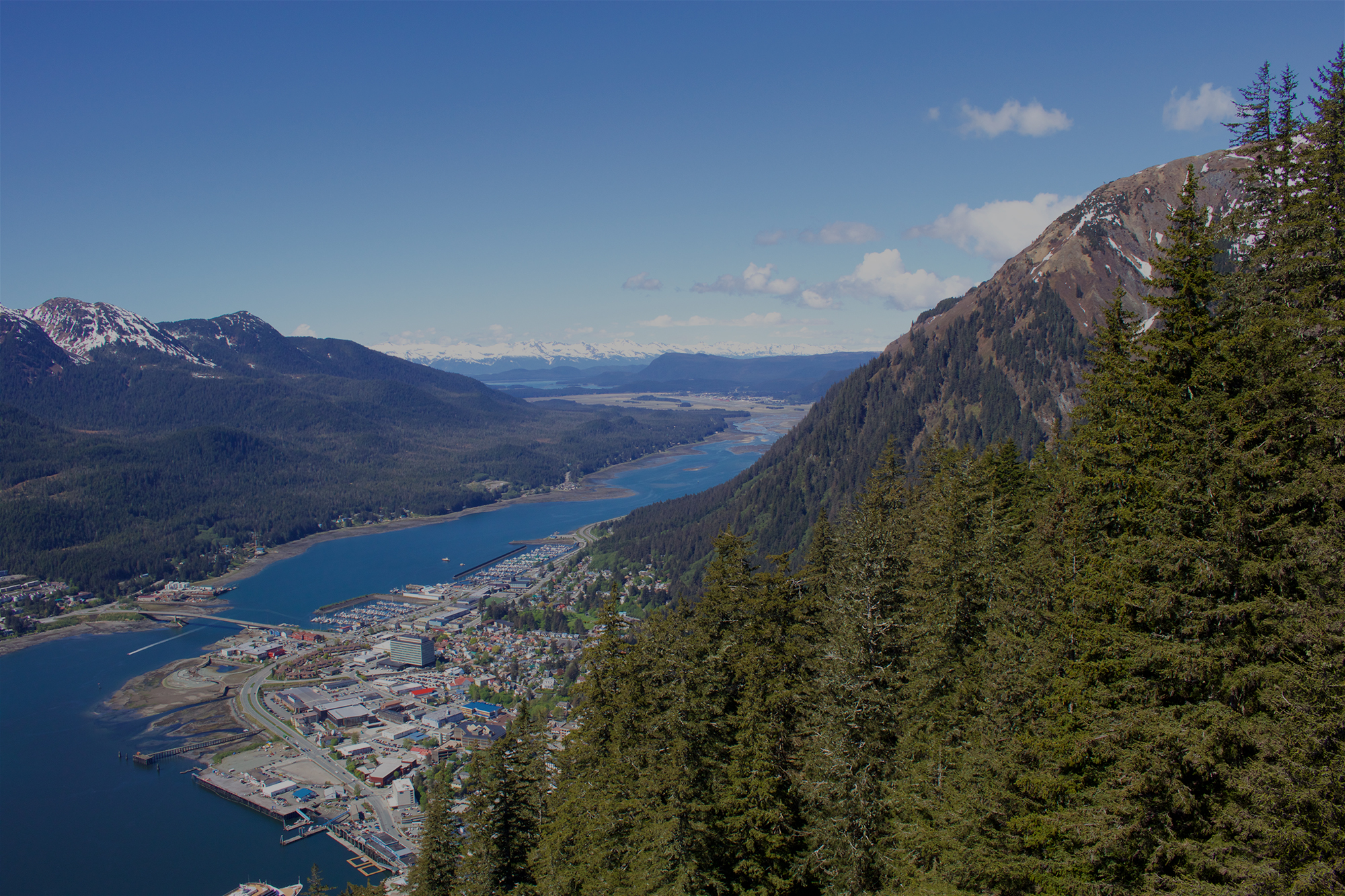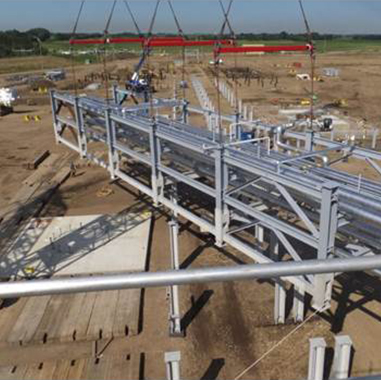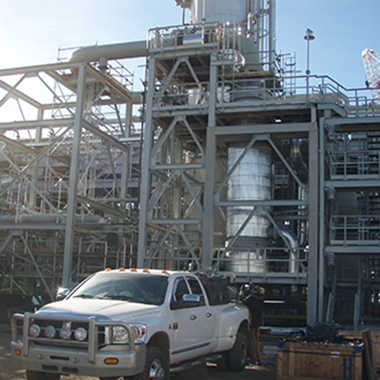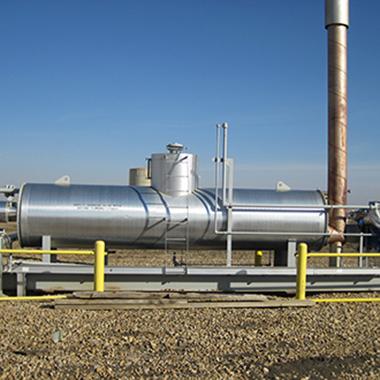Pembina Salt Cavern Program
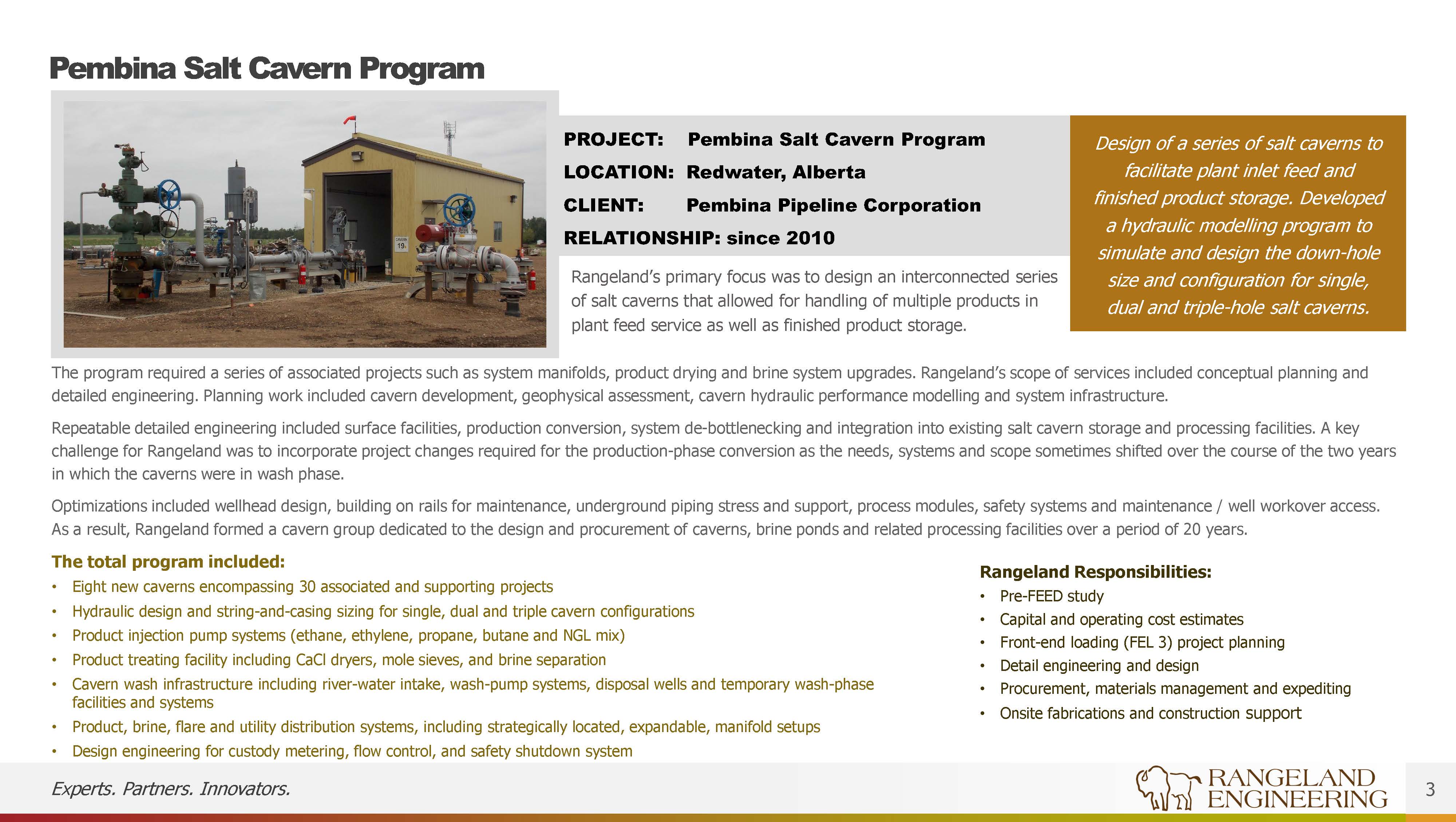
Rangeland’s primary focus was to design an interconnected series of salt caverns that allowed for handling of multiple products in plant feed service as well as finished product storage.
The program required a series of associated projects such as system manifolds, product drying and brine system upgrades. Rangeland’s scope of services included conceptual planning and detailed engineering. Planning work included cavern development, geophysical assessment, cavern hydraulic performance modelling and system infrastructure.
Repeatable detailed engineering included surface facilities, production conversion, system de-bottlenecking and integration into existing salt cavern storage and processing facilities. A key challenge for Rangeland was to incorporate project changes required for the production-phase conversion as the needs, systems and scope sometimes shifted over the course of the two years in which the caverns were in wash phase.
Optimizations included wellhead design, building on rails for maintenance, underground piping stress and support, process modules, safety systems and maintenance / well workover access. As a result, Rangeland formed a cavern group dedicated to the design and procurement of caverns, brine ponds and related processing facilities over a period of 20 years.
The total program included:
•
Eight new caverns encompassing 30 associated and supporting projects
•Hydraulic design and string-and-casing sizing for single, dual and triple cavern configurations
•Product injection pump systems (ethane, ethylene, propane, butane and NGL mix)
•Product treating facility including CaCldryers, mole sieves, and brine separation
•Cavern wash infrastructure including river-water intake, wash-pump systems, disposal wells and temporary wash-phase facilities and systems
•Product, brine, flare and utility distribution systems, including strategically located, expandable, manifold setups
•Design engineering for custody metering, flow control, and safety shutdown system
Rangeland Responsibilities:
•Pre-FEED study
•Capital and operating cost estimates
•Front-end loading (FEL 3) project planning
•Detail engineering and design
•Procurement, materials management and expediting
•Onsite fabrications and construction support

